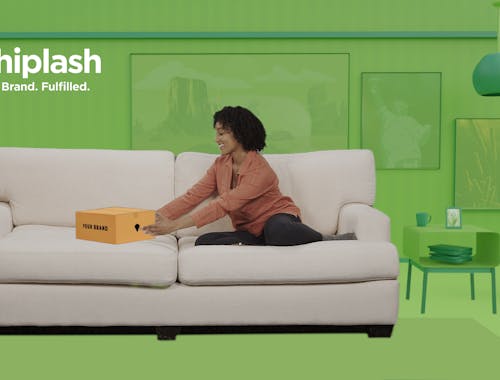Why Pinterest is the secret ingredient to your marketing strategies

It’s 2021, and after a whirlwind of a decade it’s safe to say that social media has dominated the online space and taken society by storm. Social media has impacted the way we communicate, shop and interact with brands on a daily basis. When marketing to younger audiences, Facebook and Instagram are the common focus for many e-commerce businesses. What many don’t realize is that Pinterest has now become a huge player in driving traffic to e-tailer products and brands. Learning why Pinterest is good for business has never been more important.
If you’re not yet marketing your products and services on Pinterest, you’re missing out on a significant audience. But it’s definitely not too late to get in on the action. The great thing is that many marketing professionals don’t fully know how to take advantage of Pinterest in their marketing strategies, typically leaving you with less competition compared to more popular platforms like Facebook and Instagram. In this article, we’ll shed light on why Pinterest is a worthwhile social channel for increasing customer acquisition, customer retention, and brand awareness in 2021.
Why is a Pinterest marketing strategy important?
Pinterest is a platform where users are able to easily discover visual content related to topics of interest. Users often use Pinterest for curating mood boards and getting inspiration for DIY projects, recipes and home decor.
It’s a massive hub where over 300 million users actively engage every month. And when you take into account that 61% of consumers make a purchase after seeing a promoted pin, it’s a significant amount of potential sales you could be missing out on. CEO Ben Silbermann positions Pinterest as “a catalogue of ideas” that enables consumers to imagine beyond their current state, and provides a channel for them to make purchase decisions in order to achieve their ideas.
Why e-commerce businesses should include Pinterest in their marketing strategies
Despite its tendency to fly under the radar, Pinterest has gained significant interest across a wide variety of consumer audiences. Here are a few facts:
- Among 45-54 and 55-64-year-olds, Pinterest is the fourth most popular social platform in the US.
- Around 80% of American mothers use Pinterest
- At 60% women, the gender divide on Pinterest may be narrowing
Pinterest is the second most popular social media network for Baby Boomers. However, the number of Gen Z users grew by 40% between 2019 and 2020. While more people are opting for social media detoxes in 2021, Pinterest’s advantage is that it’s viewed as a creative space where people can gather their ideas and be inspired by other user’s content. In fact, Pinterest users are twice as likely to say their time on the platform is well-spent compared to other platforms. Not only do Pinterest users find value in their experience, they also take action when a pin catches their attention.
In the US, 48% of users go to Pinterest with the intention to shop. Once they start browsing through the platform, 72% of Pinterest users then become inspired to shop. Depending on who the target audiences are for your products or services, adding Pinterest to your marketing and customer acquisition strategies can really impact your bottom line.
How Pinterest helps sell your products and services
When it comes to generating traffic to your products and services, Pinterest has a strong advantage over other platforms because it emphasizes link-sharing and saving, allowing users to share links to your website on their accounts. Instagram, on the other hand, doesn’t allow link-sharing in posts unless you have a paid Instagram ad campaign. It only allows you to add a link in your Instagram bio, where you can use other third-party tools like Linkinbio.
For e-commerce businesses, you can implement Instagram’s Shopping feature. It allows you to tag specific products in your feed and story posts, with the intent that consumers eventually land on your website. You can also add the “shop” button to your business profile and tag your posts so they appear in this section.
Pinterest makes link-sharing a lot easier. Unlike Instagram’s Shoppable Posts feature, Pinterest’s Product Pins enable consumers to buy an item with ease because the price and stock information are right below the image. In addition, you’re able to link to multiple e-commerce sites, which can be beneficial if you sell across a variety of platforms.
Overall, Pinterest has created a mutually beneficial approach to designing an engaging user experience. Users view Pinterest as the go-to place for ideas and inspiration, while businesses post more content to inspire and generate sales. Finally, Pinterest sees greater platform traffic and ad revenue.
How to market on Pinterest
Remember that Pinterest is a search and discovery tool for consumers actively and/or passively looking for specific ideas, products, and services. Understanding how they search is the first step to developing a successful Pinterest strategy. Pinterest notes that 97% of the top 1,000 searches on their site are unbranded. So, instead of searching for manufacturers or brands, people are looking for long-tail keywords like “nice brown coat”.
The results display a variety of options based on this keyword so there are numerous opportunities for your products and services to appear across a variety of searches depending on the keywords that are used. Once you have a better understanding of what and how consumers are searching for content, you’ll have a solid basis for deciding what to include in your pins and which promotional tactics are worth your investment on the platform.
Pinterest marketing strategies
Now that you understand the importance of Pinterest in your overall marketing strategy, let’s talk tactics. Below we’ve outlined a few strategies when building out a Pinterest plan of action:
Distribute your content
Because of the nature of the platform, Pinterest is uniquely positioned to distribute all types of content. This will likely include visual content, but could also extend to blog posts and videos. Unlike Instagram, users on Pinterest are able to click-through live links.
The best way to share content on Pinterest is through the Pinterest boards. In conjunction with this tactic, you can invite people to join your boards by creating “group boards”. This is a great way to increase engagement and interaction with your content.
Foster a community
Online communities like those stemming from Pinterest serve as a useful way for businesses to build their customer base. For that reason, it’s important to engage with your followers and users so that you can build a loyal community of like-minded (future) customers.
To build a Pinterest following, consider implementing the following:
- Promote your business’s Pinterest account through your other social platforms
- Monitor what kinds of content your competitors are posting
- Make use of keywords and hashtags in your posts
- Leverage influencers and/or content creators to capture the attention of their followers
Finally, if you’d like to take it one step further (and have the budget to do so), you can always pay for a Pinterest ads platform.
Create educational content
It doesn’t take a Pinterest expert to know that the platform is filled with educational content in all shapes and sizes, from tutorials, to infographics, to how-to guides. Pinterest is a great way to post engaging and informative content that will not only build brand awareness but bring customers to your online store, blog, or other areas of your website.
It’s important to zero in on your target audience when creating educational content for Pinterest. Some best practices include:
- Figuring out your buyer personas. This will help you understand what kind of content best suits their interests, values, and goals.
- Considering your competition. What are they doing well? How can you learn from those techniques while keeping your content unique?
- Viewing the boards of your followers and customers. This will shine a light on what kinds of content your following is interested in.
Make viewing your Pinterest content simple
At the end of the day, the goal of your Pinterest marketing strategy, at least in part, is to bring in customers through the platform. Since you are able to link your content to your online store, you’ll likely experience a boost in traffic and conversely, sales. Many brands use Pinterest boards to display their products (e.g. in the case of a new product launch).
On the other end, there are a number of customizable widgets that allow visitors of your website to interact with your Pinterest content. These give site visitors the ability to not only view and visit your profile, but to view specific pins or boards on your account.
Summing it up
While considering new or more grassroots marketing strategies, you may have overlooked Pinterest. But momentum is clearly picking up as marketers discover why Pinterest is good for business. The user’s ability to easily purchase directly through the platform during their time on site has great potential for generating sales.
If you’re an e-commerce business that includes social media in your marketing and customer acquisition strategies, Pinterest is definitely worth considering. Given many businesses have yet to focus their attention on this platform, you’ll be ahead of the game for 2022.
Want to compare your performance against the competition?
Connect your sales accounts to get access to our insights tool—no strings attached
CONNECT YOUR ACCOUNTS






